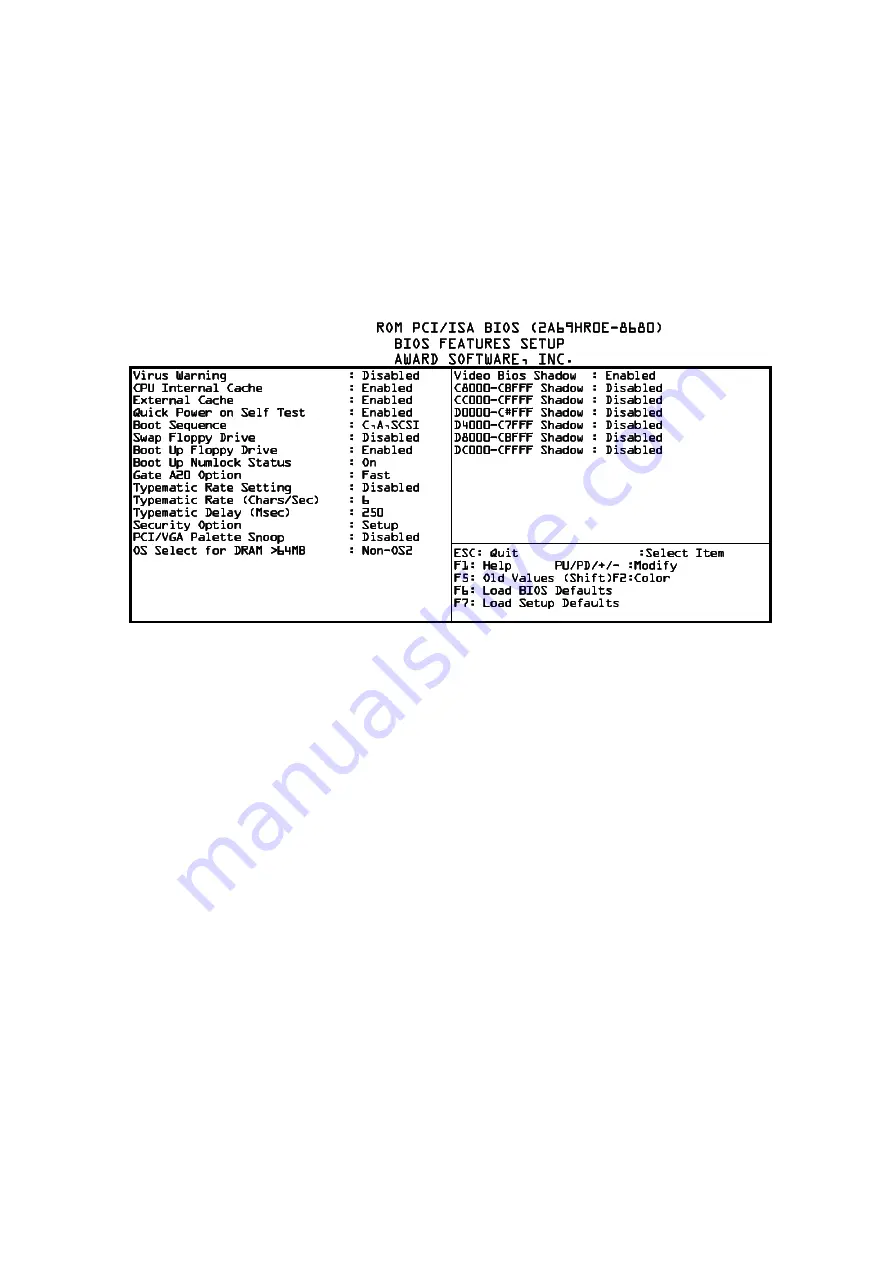
__________________________________
【
【
【
【
3
】
】
】
】
3.2 BIOS Features Setup
Run the BIOS Features Setup as follows.
1. Choose "BIOS FEATURES SETUP" from the Main Menu and a screen with
a list of items appears. (The screen below shows the BIOS default settings.)
↑ ↓ → ←
2. Use the arrow keys to move between items and to select values. Modify the
selected fields using the PgUg/PgDn/+/- keys. <F> keys are explained below:
<F1>: "Help" gives options available for each item.
Shift<F2>: Change color.
<F5>: Get the old values. These values are the values with which
the user stanted the current session.
<F6>: Load all options with the BIOS Setup default values.
<F7>: Load all options with the Power-On default values.
A short description of screen items follows:
CPU Internal
This option enables/desables the CPU's internal
Cache
cache. (The Default setting is Enabled.)
_____________________________________________________________
3-3
Summary of Contents for R653
Page 34: ...DN 97 ...
Page 35: ...PENTIUM II PCI BUS ISA BUS MAINBOARD ON BOARD PCI IDE MULTI I O R653 Users Manual ...
Page 36: ......
















































